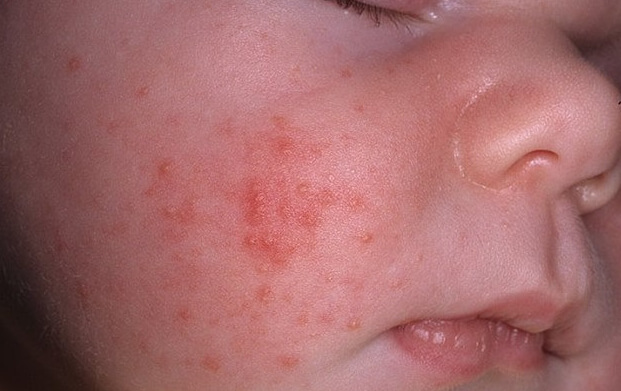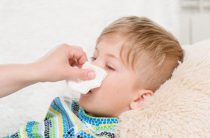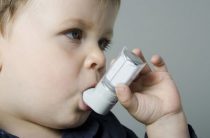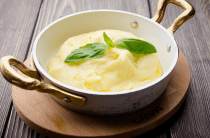Who, if not parents, will be anxious about the health of their child? It is they who spend every minute of their time near the baby, starting from the first days of his life. After all, a newborn is not able to say or show what worries him and in what place.
Therefore, it is very important to see in time when external symptoms begin to appear, since such signs are a signal of inflammatory processes in the infant. A very popular disease that needs urgent consultation with a doctor, an examination, is an allergy to a mixture in a child. Let's talk about the main symptoms, causes of the disease, treatment and other important issues.
signs
Let's talk about the main symptoms that occur if a child is allergic to the mixture.
Symptoms on the skin
The skin of the baby turns red, rashes form on them. Places of localization of rash and redness:
- cheeks;
- tummy;
- forearm;
- face;
- gluteal region;
- neck.
In addition, rashes can affect the entire body. The behavior of the little one on its own hints that the rash causes discomfort, irritates him. The peanut tries to scratch the inflamed places and is naughty. Often, the skin of the baby acquires a flaky surface, to which, when touched, you can feel how roughness and dryness appear.
Remember, the use of moisturizers or similar products is strictly prohibited. The reason for the ban is simple - they may contain substances that aggravate the course of allergies. To better understand how an allergy manifests itself on the skin, take a look at the photo. This photo shows what a baby's face looks like with allergies.
Signs from the gastrointestinal tract
What to do if mommy fed the baby, after which she noticed regurgitation, repeating one after another. Note that the baby can spit up air, a mixture. When spitting up is noted once or twice, this is normal. But if we are talking about allergies to the mixture, the number of regurgitation exceeds these figures, it can reach five to seven times. Thus, frequent regurgitation becomes a provocateur of a rather strong hiccups. How to be then what to do?
Mandatory:
- Check the size of the hole in the nipple: it should be small. Remember, for each age category there are specific pacifier parameters.
- Pay attention to how the nipple is located in his mouth: the baby should completely clasp it with sponges.
- Make sure that the baby does not swallow air throughout the feeding process.
When the measures mentioned above have been observed, and the number of regurgitation still exceeds 1-2 times, we can talk about such an ailment as an allergy. In addition to the fact that the baby has a violation of the functioning of the stomach, he will be disturbed by diarrhea or constipation. Usually, both of these phenomena cause discomfort, manifested by colic or bloating.
Respiratory manifestations
I would like to note that respiratory symptoms are observed in children quite rarely. An allergy to the mixture can manifest itself:
- cough
- runny nose, in which clear-colored mucus is discharged from the nose.
Be aware that if the aforementioned signs begin to appear, there is no increase in body temperature. If we talk about the respiratory system of infants, it is very weak, therefore it is not able to independently fight the mucus secreted in the nasal mucosa or in the bronchi in the presence of allergies. Usually mucus is secreted in large quantities. Do not forget, any suspicious symptom is a reason to urgently go to the hospital to see a doctor!
Why is there an allergy to the mixture?
According to statistics, it has been established that it is food allergy that is the problem of half of the population suffering from this disease. Over the past 20 years, the number of infants who cannot tolerate food components has increased 10 times. The list of reasons for which an allergy to the mixture in infants begins to appear:
- small, insufficient amount of own immunoglobulins;
- poor activity of digestive enzymes;
- intestinal microflora, which is only at the stage of formation.
Also, one of the factors that help to manifest all the signs of an allergy is the imperfection of the gastrointestinal mucosa. In this case, incomplete cleavage of proteins is observed. They enter the blood in the form of large fragments. The immunity of the baby takes such fragments as elements of foreign origin.
Among the most popular reasons due to which infants are allergic to the mixture is cow's milk protein, or rather its high allergic properties, which provoke the development of the disease in a child. As you know, cow protein is the main component contained in mixtures for formula-fed infants.
Note that with age, the child's allergy or disappears is able to disappear for good, since his gastrointestinal tract, as well as immunity, will be formed to the end. In some cases, an allergy turns into a disease that accompanies a person throughout life.
Other factors
Now consider the factors that can provoke the symptoms of an allergic reaction that occurs on a formula for feeding an infant. Please note, if any of the statements that will be mentioned below are typical for your little one or for you, you should constantly monitor the condition of the skin and gastrointestinal tract. You should also pay attention to respiratory symptoms.
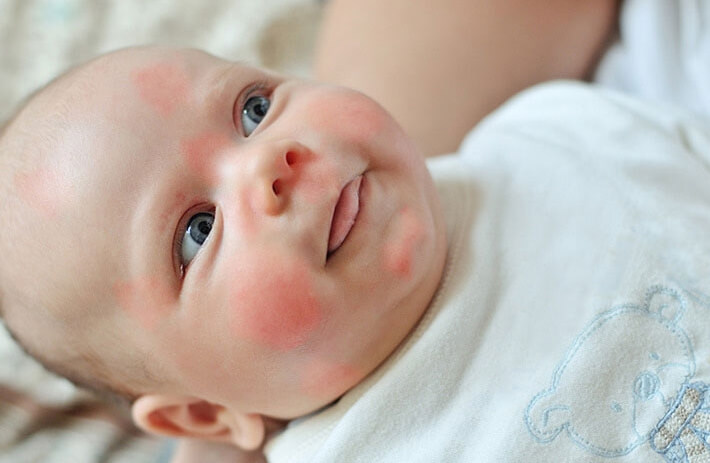
Factors:
- one of the parents has an allergy (or both) or hypersensitivity to any substance;
- premature birth of a child, as a result of which he has a reduced weight;
- when pregnant, mommy took antibiotics, got sick and treated a viral disease;
- during the transition to artificial feeding, the mother fed the little one with mixtures made by different manufacturers;
- during the first weeks of their months of life, the baby was ill with a viral disease.
Some features of the treatment
What to do? How to be? Such questions are often asked to the doctor by mothers of babies. Doctors may advise switching to other mixtures that are unusual for the baby's body. The transition is carried out with caution, only on the advice of a specialist.
The purpose of any mixture depends on various factors: allergy symptoms, the age of the crumbs, and other points. Basically, an important part of therapy is the exclusion of cow's milk protein, since it is this protein that often causes allergies in a child. The pediatrician must use an individual approach to each toddler. He can advise mixtures:
- elemental (consisting of amino acids);
- fermented milk;
- whey;
- based on goat milk;
- hypoallergenic (they include a partially split protein);
- containing prebiotics, probiotics that improve bowel function, help increase the number of lactic acid bacteria necessary for normal bowel activity.
Briefly about mixtures
In the 21st century, among the popular mixtures that have a positive effect on the gastrointestinal tract of crumbs, they contribute to the breakdown of protein to amino acids:
- Nan (Nan);
- Hipp (HIP);
- Unstable;
- Agusha;
- Nutrilak;
- Nutrilon, etc.
Let's look at a brief description of several mixtures. Nestogen is produced in Switzerland by the world famous company Nestle. Nestozhen helps to get rid of constipation, improves the digestion process, contains prebiotics, iron, zinc, is prescribed for healthy babies who cannot breastfeed from birth. The mixture is rich in fatty acids, trace elements, vitamins.
The protein component, which is an important component of this nutrition, is close to the composition of the protein in mother's breast milk. But, nevertheless, do not forget: breast milk cannot be replaced by anything. If we talk about another popular mixture, it is produced in countries such as Hungary, Austria. It's a mix of Hipp. It is also made for healthy babies when breastfeeding is not possible.
But special mixtures have also been developed for small crumbs who have a disruption in the functioning of the digestive system. These ailments include the manifestation of colic, constipation, bloating. Each food has its own age restrictions. Therefore, remember, any mixture, Nestogen, Hipp, others should be prescribed by the doctor individually.
Look at the photo, remember how the allergy manifests itself. Self-treatment is a dangerous method of therapy! If symptoms of this disease occur, you know what to do - take the child to the hospital in time.
